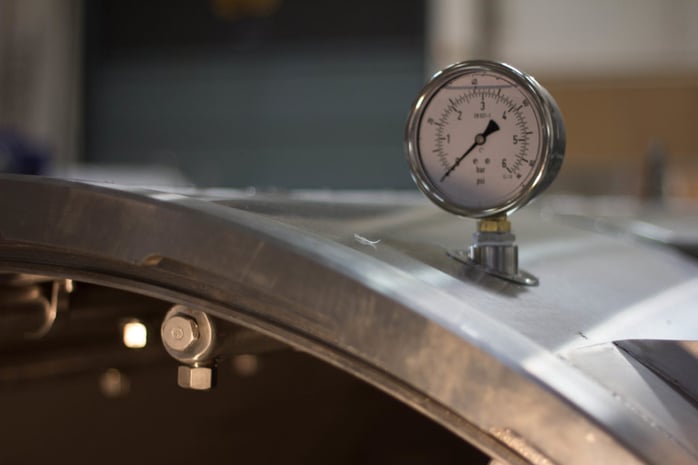It is essential to achieve an appropriate and stable temperature inside the retort, as the proper sterilization of our products is at stake. By maintaining the appropriate temperature, deviations will be avoided, which could otherwise affect the product quality and even lead to a food safety problem.
It is usually advisable to apply high temperatures for short periods in sterilization processes in order to reduce the cooking effect. However, this will always depend on the product, as a very high temperature could overcook the surface of solid or viscous food. Therefore, the correct temperature should be established in accordance with each product, and as part of the recipe.

To maintain the right temperature, the most important aspects to bear in mind are:
Control steam and water inputs to ensure they are within the appropriate range of values
The retort uses steam as a means to reach high temperatures and destroy the micro-organisms that release toxins or cause fermentation. The injection of steam in combination with water ensures a good temperature distribution, guaranteeing the safety of the sterilization process.
The product heating rate and the uniform temperature will depend on the steam flow provided through the perforated pipes (for direct stem injection) or in the external heat exchangers (for indirect steam injection). Therefore, it is essential to check that steam and water inputs are always within the required values, as any imbalance could lead to temperature deviations.
Supervise the temperature master gauge calibration
Temperatures are checked by means of a master gauge, which should be regularly calibrated. This control test is always performed externally by a specialized laboratory. The master gauge is calibrated based on a temperature standard with improved traceability. As a general rule, calibration is performed once a year, although it may need to be carried out more frequently.
The temperature control and recording devices should be permanently adjusted to the master gauge reading. If there is a deviation of ± 0.5 ºC, the operator should notify the Head of Quality Control.
Keep all components of the retort clean and in good condition
To obtain the correct and stable temperature inside the retort, the equipment should be kept in good condition through preventive maintenance tasks. Cleaning and review of the instruments will be carried out regularly. These processes will be performed by qualified and authorized staff.
Cleaning tasks should include:
-Gasket (cleaning and lubrication)
-Pump suction grid
-Recirculation strainer
-Water level controller
-Spray nozzles Spreaders
The specific frequency and cleaning processes will always depend on the production level and the indications provided by the retort manufacturers.
Perform Temperature Distribution (TD) and Heat Penetration (HP) tests
The retort thermal process is complex and is the most critical point in the entire production line. Optimum performance will extend the shelf life of the packaged food or beverages and improve their preservation, whilst an error may lead to a serious food safety problem. Proper performance of thermal processes will also help to extend the useful capacity of the retorts and increase productivity.
Over time, deviations in these processes are usual, so it is important to detect them rapidly, identify their source and know how to handle them. To do so, it is highly recommended to carry out regular thermal distribution (TD) and heat penetration (HP) tests.


![[Free guide]: Most common problems of industrial retorts](https://no-cache.hubspot.com/cta/default/4638724/e820a499-caa9-425b-99a5-2aeb160d246c.png)
